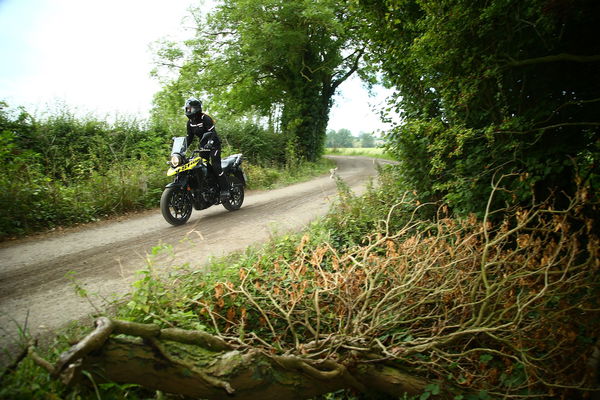First ride: Suzuki GSX-R125 and GSX-S125 review
The GSX-R125 and GSX-S125 boast a host of class-leading specs

NOT since the late 1990s has the Suzuki badge been seen among the throng of sporty 125s on sale.
However, for 2018 the Japanese manufacturer is back with a vengeance, launching the GSX-R125 and GSX-S125 into the already overpopulated low-capacity sportsbike market.
A tough task, admittedly, but one that Suzuki has embraced, with both bikes arriving boasting a host of class-leading specs in their respective sectors.
Best power-to-weight ratio? Check. Best acceleration? Check. Lowest seat height? Check. Most attractive? That’s personal choice, but to my mind it’s a definite check.
The ‘R’ and ‘S’ share many of the same components, although due to different chassis set-ups offer completely different rides. The R is sleek, sporty and slung forwards. The S is its naked twin on steroids.
We rode both models last week, taking to Silverstone’s Stowe circuit on the R, and to the track’s periphery on the S.
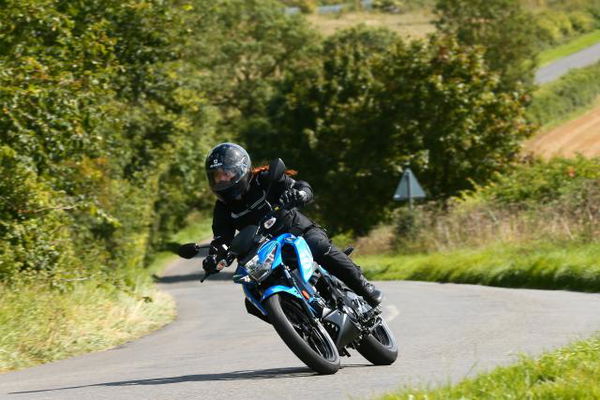
Engine:
The two share a newly-designed 124.4cc 4-stroke liquid-cooled DOHC single cylinder, which makes 14.75hp and 8.5lb-ft. With kerb weights of 134kg and 133kg, Suzuki claims the GSX-R125 and GSX-S125 boast the best power-to-weight ratios in the 125cc class.
Power delivery is linear, and abundant up until the 11,500 redline, reaching its peak slightly earlier, at 10,000rpm. Peak torque, meanwhile, is seen at 8,000rpm.
Even in high revs, this unit keeps on giving, allowing speeds in excess of 30mph to be reached in second gear.
And its frugal; making 122.8mpg which, when combined with the bike’s tank capacity of 11-litres, gives potential for a range approaching 300-miles. If only we could see figures like this on larger sportsbikes!
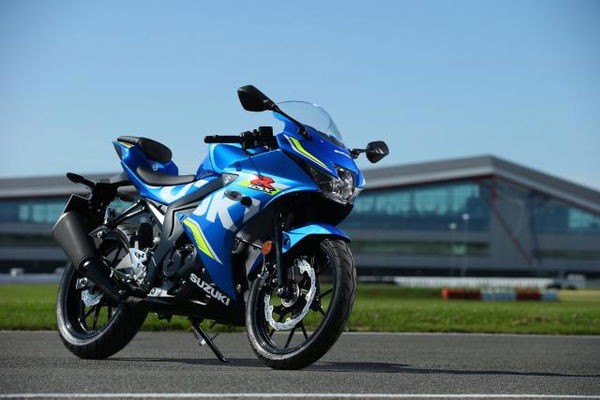
Handling:
Despite their joint DNA, the two bikes are polar opposites when it comes to handling.
Admittedly, both are light and agile, but the rider ergonomics make all the difference. There’s a 100mm height distinction between the handlebars of the R and S, with the former boasting downwards angled clip-ons, and the latter a more upright, civilised set of bars. Both have incredibly easy, lightweight steering.
The R demands to be hugged, and leant into bends. Getting a knee down is surprisingly easy on the lightweight machine, although we’d only advise this on a closed track – obviously. However, with a 35-degree steering angle, it is also incredibly easy to manoeuvre around town, even at low speeds.
The S is like a BMX on steroids. With a 40-degree steering angle and 165mm ground clearance it can be thrown around like nobody’s business.
A light clutch and smooth acceleration on both models makes them an unintimidating prospect to learner riders.
Suspension:
Suspension is well-damped, but unfortunately un-adjustable. While, at 56kg, I found it to the be the perfect compromise, heavier riders may yearn for some kind of preload adjustability.
That said, the telescopic, coil spring, oil damped system up front, and link type, coil spring, oil damped set-up at the rear coped as well on the rutted roads of Buckinghamshire as it did the smooth surface of the track – showing an admirable all-round versatility.
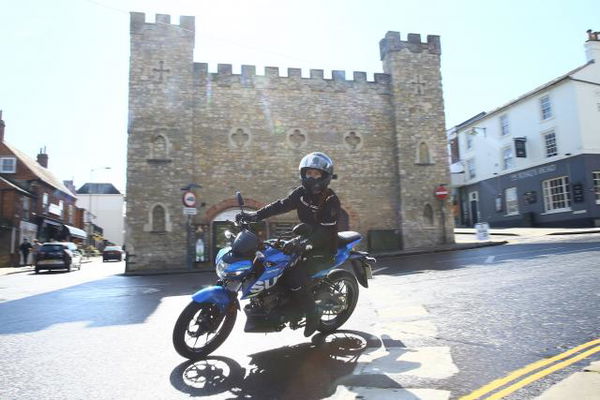
Brakes:
Wavy-type discs feature front and rear on both models, as does Bosch’s ABS 10 base unit – which Suzuki claims is the lightest and most compact two-channel ABS system available.
While it has the potential to be oversensitive, Bosch have got the balance spot on, and the ABS is entirely unobtrusive.
The brakes themselves are sharp and progressive, again a reassuring factor to entry-level riders.
Equipment:
Security appears to have been a high priority in the eyes of the engineers, with both bikes sporting unique anti-theft ignition devices.
The GSX-R boasts a wireless fob which, when within a metre of the bike, allows the ignition switch to be twisted. The awkwardness of removing the key from the fob to open the fuel cap has also been accounted for; when the fob is in proximity to the bike, the ignition switch can be withdrawn to reveal a key.
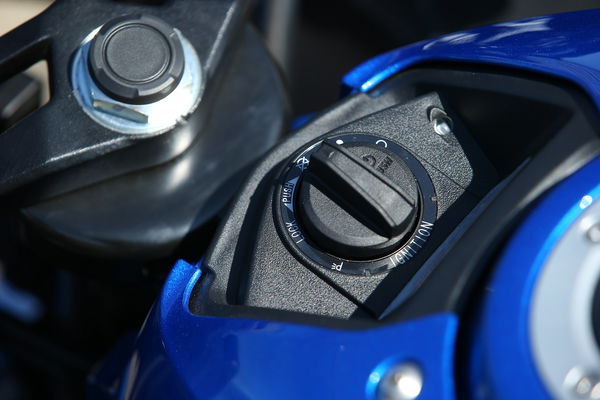
The S features a catch which slides a metal plate above the key hole, and prevents thieves from jamming a screwdriver into the ignition to hotwire the bike. The metal plate can only be retracted using the circular side of the key.
Both bikes come fresh from the factory wearing 17-inch Dunlop D102 tyres – excellent, grippy and forgiving rubber.
We like:
The whole package – both of them! Suzuki has launched itself back into the sporty 125cc class with a bang, and two more than worthy opponents to models from the likes of Yamaha, Honda, Aprilia and KTM.
At £3,699, the GSX-S125 costs £400 less than the KTM Duke 125, £600 less than Yamaha’s MT-125 and £900 less than the Aprilia Tuono 125.
The £3,999 R is better value than Aprilia’s £4,700 RS 125, KTM’s £4,299 RC125 and Yamaha’s £4,599 R125. It is, however, £200 more than Honda’s CBR125R.
The GSX-R125’s aerodynamic farings, featuring styling cues from the manufacturer’s fully-grown models, look incredible, especially in the MotoGP colours that we tested (a £100 premium over the standard paint job, but totally worth it), and from a distance can trick you into thinking the bike is bigger than 125cc.
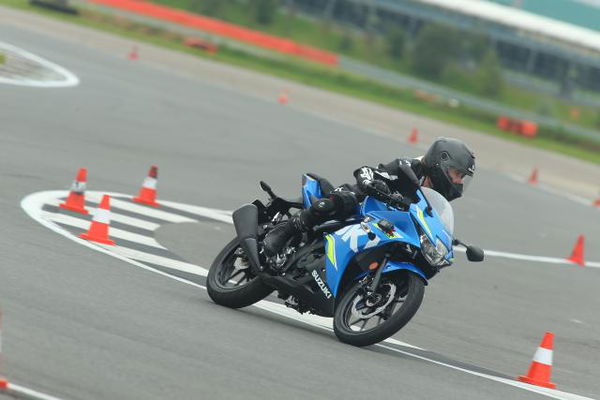
We don't like:
It’s hard to fault these awesome little crotch rockets, which tick every single box in the 125cc class.
A marginally larger tank would consolidate the impression of the bikes being bigger than they actually are, but that is only a very minor gripe.
Adjustable suspension would be nice, but would likely push the price up.
CLICK NEXT FOR VERDICT, SPECS AND MORE PICTURES.
Verdict:
If I was to have to choose between the naked and fared machines, I would at first draw a blank. Both are excellent in their own right, and provide thrills for days.
But, as is always the case, the naked option promises to be that little bit more practical, comfortable and manoeuvrable. And, it’s £300 cheaper – which is a lot of money when you’re talking sub-4k bikes.
If I’d have access to either of these downright fun machines as a learner, a full licence would have been hard to justify.
Model tested: Suzuki GSX-R125 and GSX-S125
Price: GSX-R125 - £3,999, GSX-S1255 - £3,699
Engine: 124.4cc 4-stroke liquid-cooled DOHC single cylinder
Power: 14.75hp
Torque: 8.5lb-ft
Kerb weight: 133kg/134kg
Seat height: 785mm

